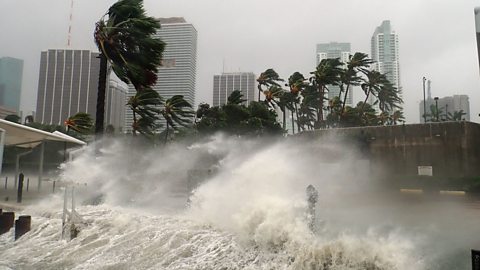What do you know?
What is a tropical storm?
A tropical storm is a very powerful revolving storm with strong winds and heavy rainfall that forms over warm tropical oceans. Depending where they occur they are also known as hurricanes, typhoons and cyclones.
Key points
- Tropical storms can cause devastation to a region which will require responses.
- The responses can be immediate, such as rescuing people, or long term, such as rebuilding infrastructure.
- How well a country responds will depend on the wealth of a country.
Responses to tropical storms
A tropical storm can cause devastating effects due to the high winds and storm surgeA rise in the sea level as strong winds push the sea up and towards the coastline.. These effects require government action plans in the form of either immediate or long-term responses.
Immediate responses
Immediate responses happen either before the storm hits or immediately afterwards. These may include:
- evacuationTo remove someone from a place of danger to somewhere safe. of residents
- emergency services rescue those who are injured or in danger
- aid is provided by governments and non-governmental organisations (NGOs)A non-profit group that works independently of any government. to provide food, water and medical care
- temporary shelter is set up for people who have had to evacuate their homes
- digital maps are used during and immediately after the storm using satellite photographs to advise on evacuations and support emergency services in rescues
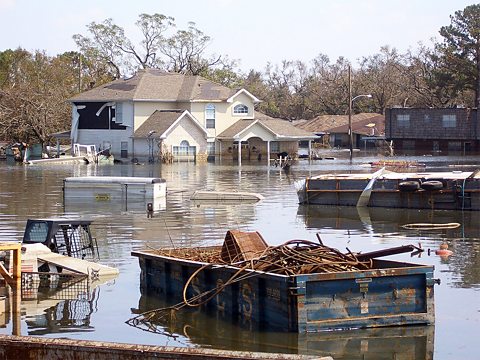
Long term responses
Long term responses take place in the weeks, months and years after the storm and aim to repair the area affected and protect it from further storms. These may involve:
- repairing damaged infrastructureThe parts of the built environment needed for a country to function such as roads, water pipes and ports.
- strengthening and repairing flood defences
- rebuilding property damaged and rehousing the homeless through rebuild and repair schemes funded by the government
- improving forecasting and monitoring systems allowing for better prevention of damage
- changing building regulations so that properties and infrastructure can withstand the impacts of a tropical storm
Reducing the risk
Tropical storms can be devastating and it is, therefore, a priority for a lot of nations to attempt to reduce the risks associated with tropical storms. This can be done by using the ‘three Ps’:
- Planning
- Prediction
- Protection
Planning
- Training emergency services how to react to a storm can reduce the number of deaths.
- Planning evacuation routes can allow people to get away from the storm quicker.
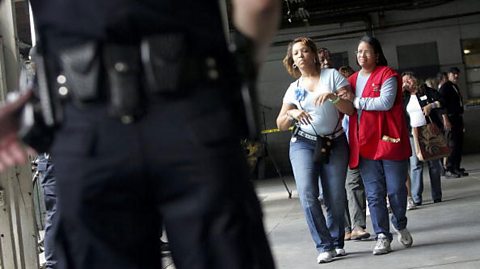
Prediction
- Scientists use satellites, radarA system used for detecting storms using radio waves. and aircraft to monitor storms and computers to predict where they will hit, giving people time to evacuate.
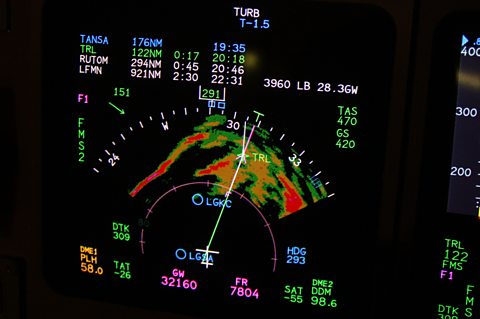
Protection
- Buildings can be made to withstand tropical storms. They can be put on stilts to lift them out of floodwater or be built with reinforced materials to prevent wind damage.
- leveesA raised embankment alongside a river that acts as a flood defence. and sea walls can be built to prevent flooding.
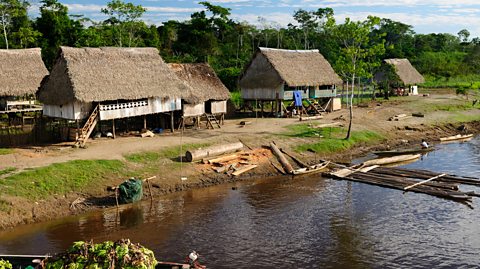
Question
The risks of tropical storms can be reduced by the three Ps. What are the three Ps?
The three Ps are planning, prediction and protection.
Factors affecting risk
Several factors can affect the level of risk a country has from a tropical storm.
For example, if the area is heavily urbanisedA built up area which is mostly towns or cities. and densely populatedA large number of people living closely together in an area. there may be more risk, especially in low income countries (LICs)Countries recognised by the World Bank as having a lower income than other countries. This classification is reviewed yearly. (LICs) where the urbanRelating to towns and cities; built up areas, the opposite of rural. poor often live in low-quality housing.
One reason for this is that the concrete used to build roads and buildings does not allow water to soak in, leading to greater flooding as the water runs quickly into rivers. On the other hand, in ruralRelating to the countryside. The opposite of urban. areas where the land is often covered with grass and plants, water soaks into the ground.
The level of development can have a big impact on the effects of and responses to a tropical storm. Low-income countries (LICs) are more at risk and 90 percent of victims from natural disasterA natural event such as an earthquake or flood which causes loss of life or extensive damage. are from low-income countries. This may be because a low-income country may not be able to afford the defences needed to protect against a storm or be able to invest in prediction methods.
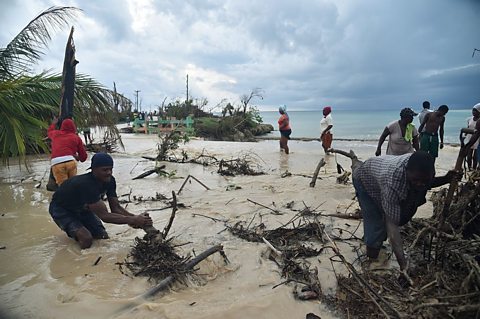
For example, Hurricane Matthew struck the Caribbean country of Haiti on October 4, 2016 causing 546 deaths. Haiti is one of the poorest countries in the world and despite being in the path of regular hurricanes it lacks the defences needed to protect itself.

If a country has a high income then they will be able to spend more on emergency services but this may not be the case in a low-income country. For this reason, the death toll and amount of damage caused is often higher in low income countries (LICs)Countries recognised by the World Bank as having a lower income than other countries. This classification is reviewed yearly..
The United States for example, despite experiencing a number of hurricanes each year can invest in flood defences such as levees and early warning systems resulting in a lower death tollThe number of people who die in an accident, war or disaster etc. .
Case study - Hurricane Sandy
Hurricane Sandy was a tropical cyclone which occurred in October 2012. It started off the coast of West Africa, travelled across the Atlantic Ocean, through countries such as Cuba, Haiti and The Bahamas before hitting the east coast of the USA.
The route of hurricane Sandy
Responses
The responses to Hurricane Sandy were varied.
In low income countries (LICs)Countries recognised by the World Bank as having a lower income than other countries. This classification is reviewed yearly. like Haiti there was insufficient prediction, planning or protection due to a lack of resources.
In contrast, high income countries (HICs)Countries that have a high income, such as the UK and Japan. like the USA, had better prediction, planning and protection. The National Hurricane Centre in Miami predicted and monitored the path of Hurricane Sandy and issued warnings which reduced the impact of the storm in the USA:
- Police evacuated hundreds of thousands of people from low-lying coastal areas most vulnerable to Hurricane Sandy.
- Schools and public transport services closed down.
- People temporarily relocated to evacuation centres.
Impacts
- Economic – At the time Hurricane Sandy was the second most costly hurricane on record after Hurricane Katrina, causing $71 billion in damages. In New York City, economic losses are estimated at exceeding $18 billion.
- Social – In Washington DC and other cities, many supermarkets ran out of essentials such as bottled water and batteries as people prepared for the worst.
- Environmental – More than 70 per cent of crops, including bananas and maize, were destroyed in the south of Haiti.
How countries respond to tropical storms
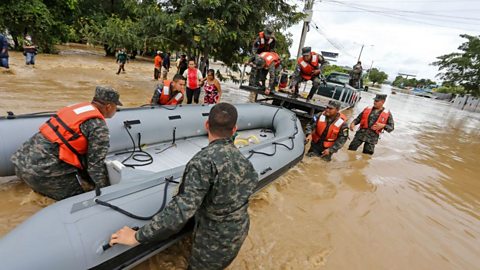
Image caption, Storm Iota, which made landfall in Nicaragua in November 2020, saw the country's military help to evacuate those trapped by the storm.
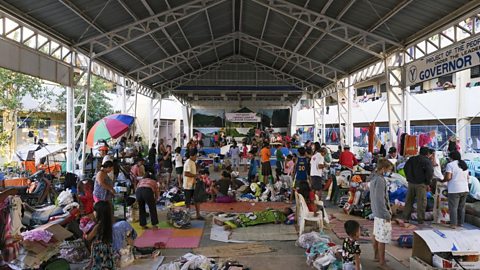
Image caption, When Typhoon Vamco hit the Philippines and Vietnam in 2020, people were housed in makeshift evacuation centres.
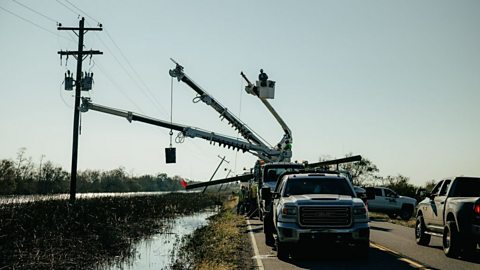
Image caption, Hurricane Delta made landfall in October 2020 in Louisiana, USA and caused damage to power lines (infrastructure) which needed repairing.
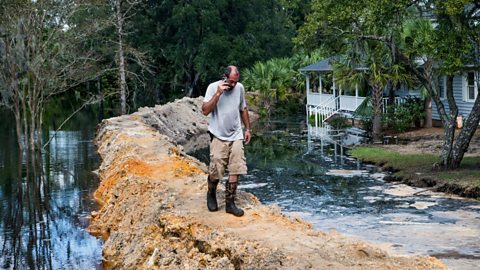
Image caption, After Hurricane Florence hit South Carolina, USA in 2018, temporary levees were built to hold back flood water.

Image caption, Specially equipped aircraft, known as hurricane hunters, can be used to monitor tropical storms.
1 of 5
Question
Name one immediate response to a tropical storm.
Immediate responses to a tropical storm include evacuation, rescue and providing temporary accommodation.
Test your knowledge
GCSE exam dates 2025
Find out everything you need to know about the 2025 GCSE exams including dates, timetables and changes to exams to get your revision in shape.

More on Hazards
Find out more by working through a topic
- count1 of 5
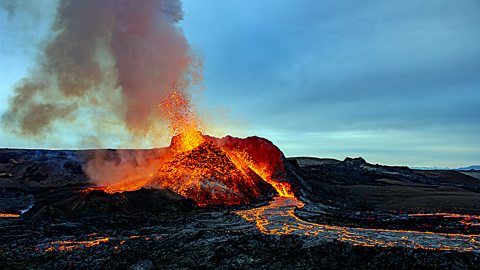
- count2 of 5
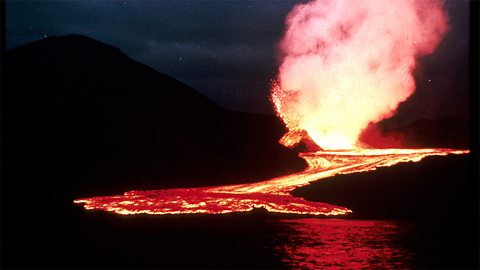
- count3 of 5
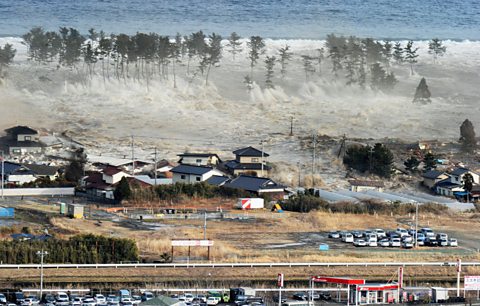
- count4 of 5
